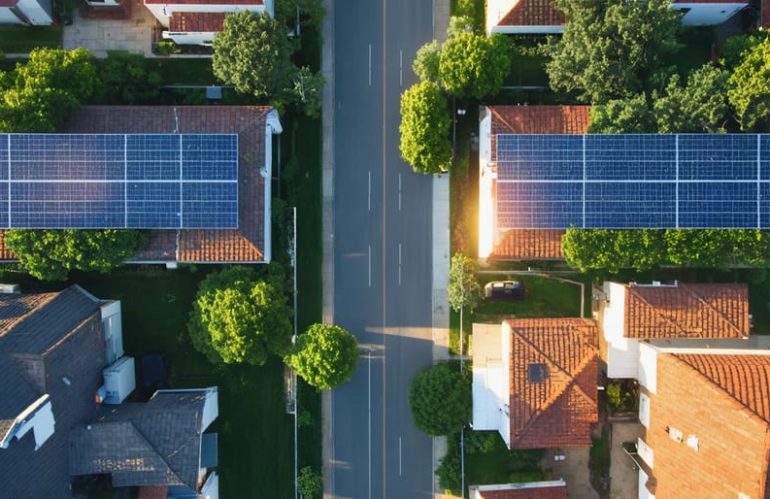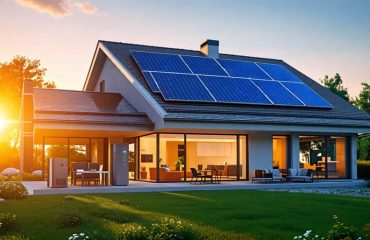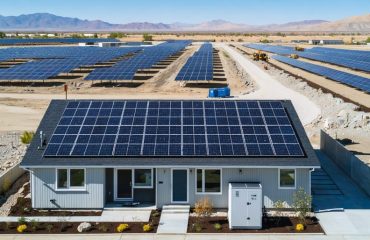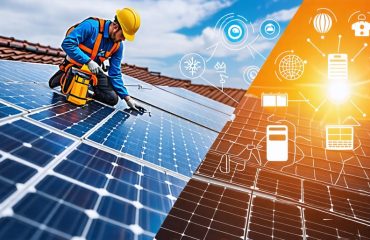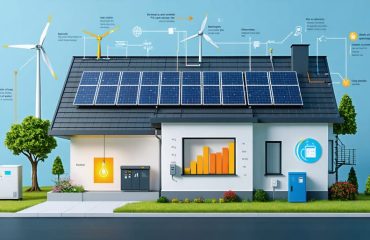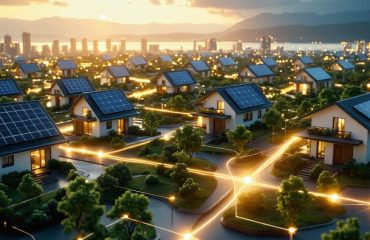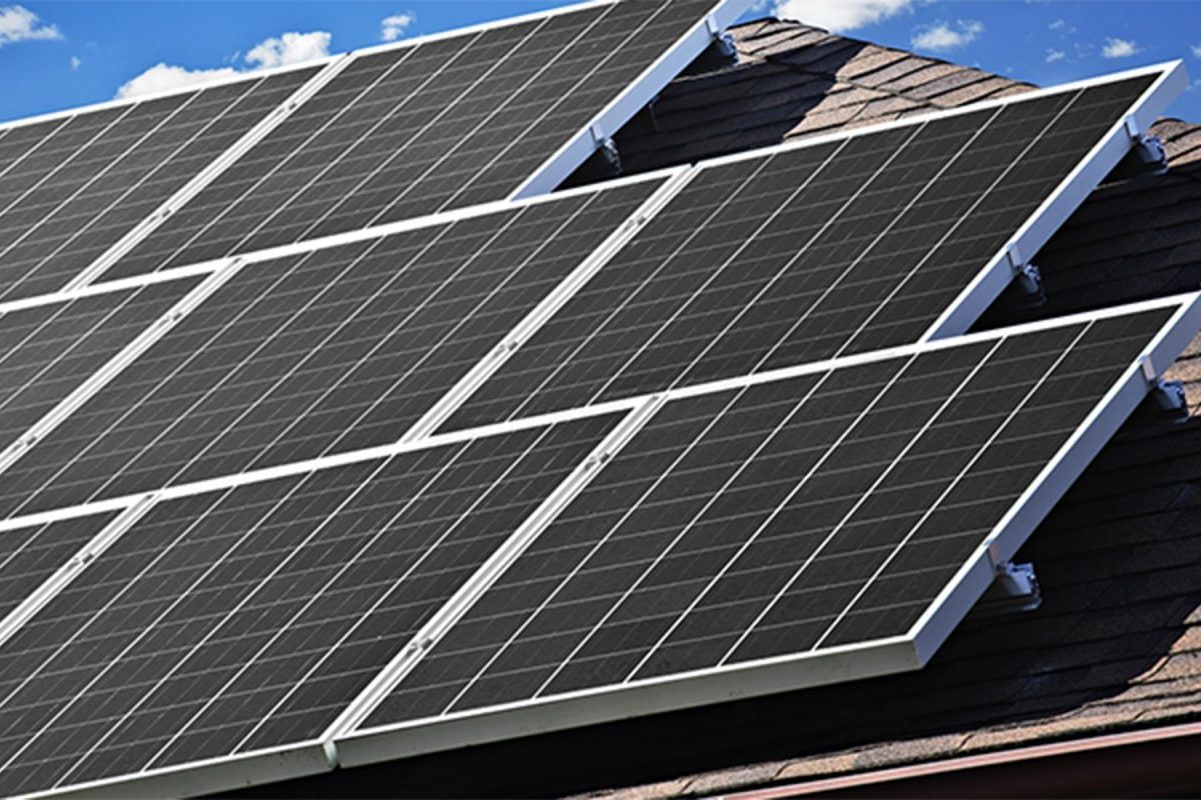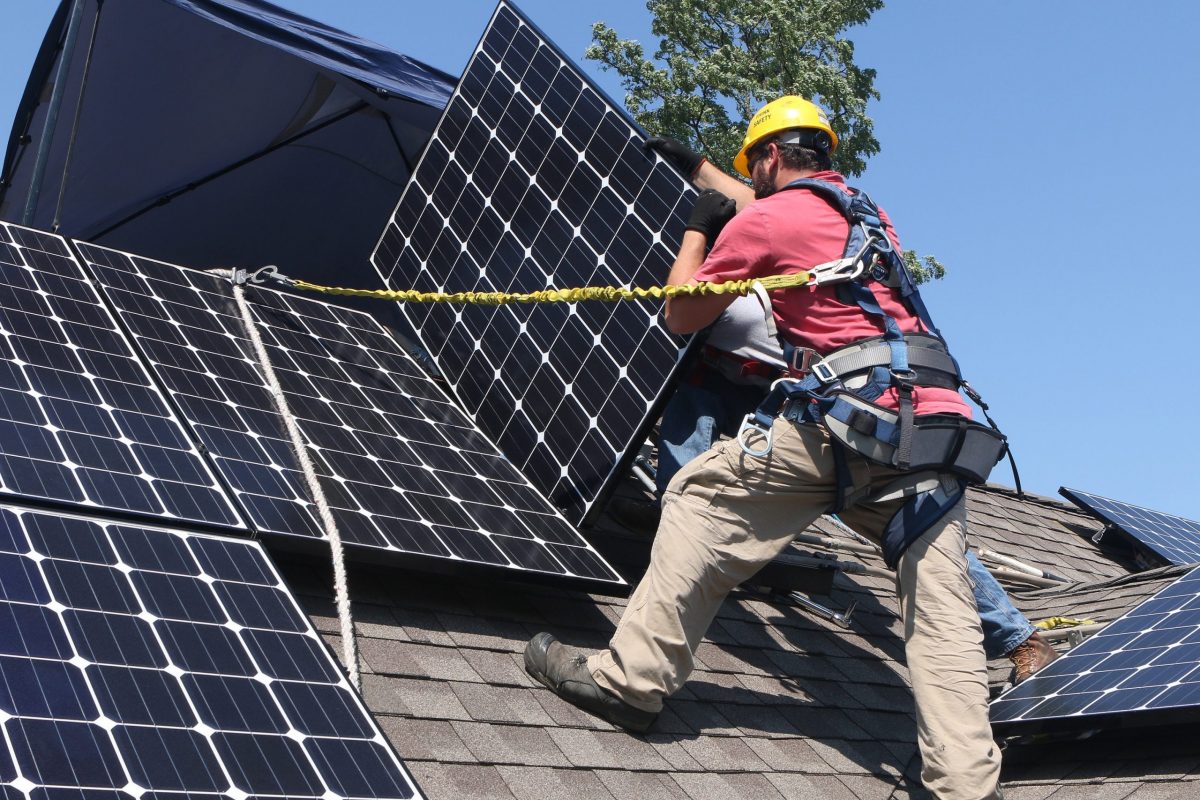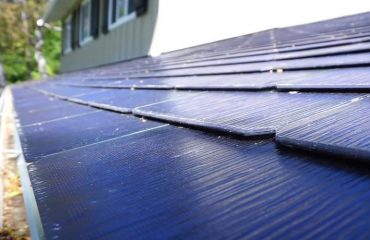As renewable energy powers more homes across America, our electrical grid faces an unprecedented challenge: balancing the intermittent nature of solar and wind power with our constant demand for electricity. While sunny days might flood the grid with excess solar power, cloudy evenings can create sudden supply drops, threatening the stability that keeps our lights on and appliances running.
Yet this challenge has sparked remarkable innovation in energy storage and grid management. Advanced battery systems, smart grid technologies, and improved forecasting now work together to smooth out these renewable energy fluctuations. Homeowners increasingly participate in this transformation through residential solar installations paired with home batteries, creating a more resilient and distributed power network.
The solution to grid stability lies not in choosing between renewables and reliability, but in embracing new technologies that enable both. As we transition to cleaner energy sources, understanding these challenges and their solutions becomes crucial for maintaining the consistent power supply we depend on while building a more sustainable future.
Why Grid Stability Matters for Your Home’s Power
The Solar Power Challenge
Solar power, while incredibly promising for our clean energy future, faces one significant challenge: intermittency. Simply put, solar panels only generate electricity when the sun is shining. This creates a mismatch between peak energy production (during sunny daylight hours) and peak household demand (typically early morning and evening).
Cloud cover, seasonal changes, and weather patterns can also impact solar energy generation, making it less predictable than traditional power sources. However, modern technology offers effective solutions to keep your home powered 24/7. Solar battery storage systems, smart grid technologies, and improved weather forecasting are helping to smooth out these natural fluctuations.
Think of it like collecting rainwater – just as you’d store water for use during dry spells, energy storage systems help balance solar power availability throughout the day and night. This solution ensures reliable power even when the sun isn’t shining.
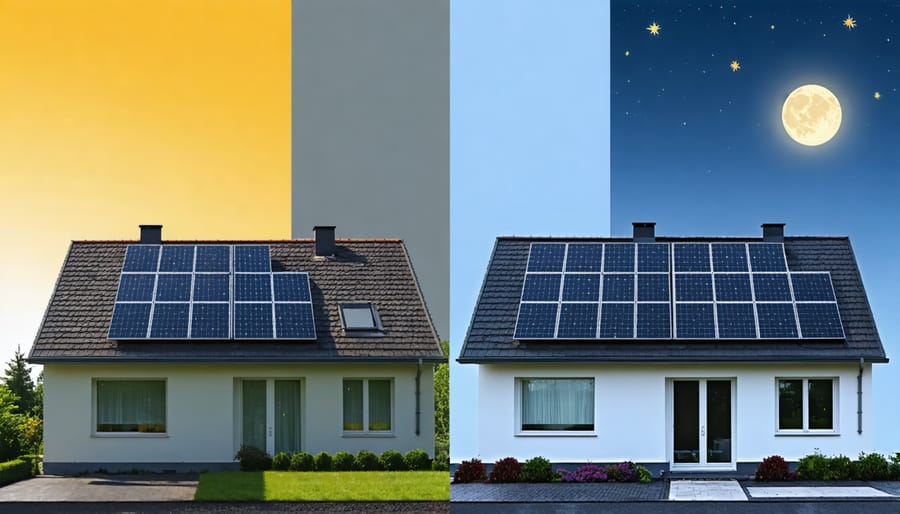
What Happens When Everyone Goes Solar?
As more homeowners in a neighborhood adopt solar panels, the local grid actually becomes more resilient, not less stable. Modern solar installations include sophisticated inverters that help maintain voltage stability and can respond quickly to grid fluctuations. When multiple homes generate solar power, they create a distributed network of energy production points, reducing strain on the main power grid during peak usage times.
Contrary to common concerns, neighborhood-wide solar adoption can actually improve power quality and reduce the likelihood of outages. The key is proper planning and integration with the existing grid infrastructure. Utility companies are increasingly adapting their systems to accommodate higher levels of solar penetration, implementing smart grid technologies that can efficiently manage bi-directional power flow.
Moreover, as battery storage systems become more common, neighborhoods can create micro-grids that enhance energy independence and provide backup power during emergencies. This distributed approach to power generation makes the entire system more flexible and resilient.
Energy Storage: Your Home’s Power Guardian
Battery Backup Basics
Home battery systems have revolutionized the way we store and use renewable energy, offering a practical solution to grid stability concerns. These systems work by storing excess electricity generated during peak production times, typically during sunny hours for solar panels, and releasing it when needed, such as during nighttime or cloudy periods.
Most modern home batteries use lithium-ion technology, similar to what powers electric vehicles but scaled for residential use. When your solar panels produce more power than your home needs, instead of sending that excess to the grid, it charges your battery system. Later, when your panels aren’t producing enough power, the battery automatically kicks in to supply your home with stored electricity.
A typical home battery system can power essential appliances like refrigerators, lights, and electronics for several hours during an outage. Many systems also include smart features that automatically detect grid outages and switch to battery power within milliseconds, ensuring uninterrupted power supply to your home.
The size of your battery system depends on your energy needs and goals. While some homeowners opt for minimal backup to cover essential loads during outages, others install larger systems aimed at maximizing energy independence. Modern systems are compact, often wall-mounted, and require minimal maintenance, making them an increasingly popular choice for environmentally conscious homeowners.
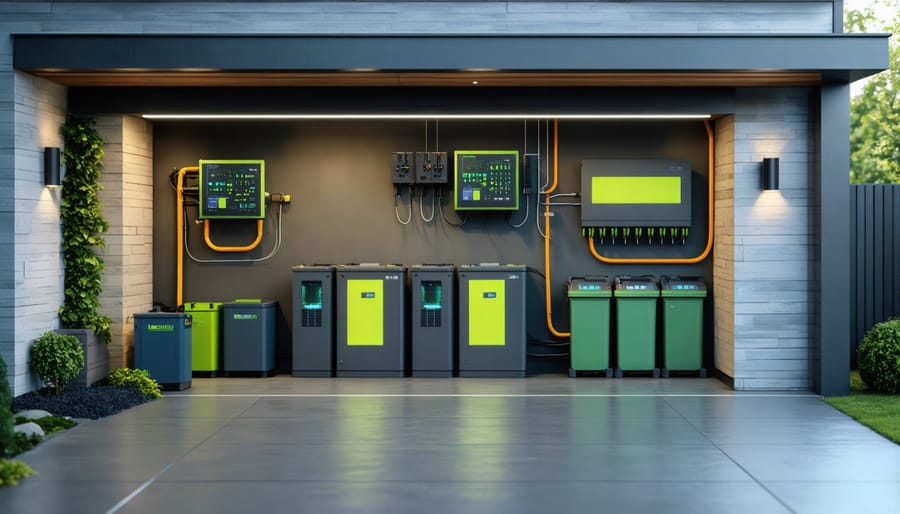
Smart Grid Integration
Modern power grids are becoming increasingly sophisticated, with smart grid integration playing a crucial role in managing renewable energy sources effectively. These intelligent systems use advanced communication technologies to balance power supply and demand in real-time, making renewable energy more reliable for everyday use.
Think of the smart grid as a conductor orchestrating different instruments in a symphony. When solar panels produce excess energy during sunny days, the grid directs this surplus to battery storage systems or redistributes it to areas with higher demand. Similarly, during cloudy periods or at night, the grid can draw from stored energy or alternative sources to maintain consistent power delivery.
For homeowners, this means more efficient use of their solar installations and better energy management overall. Smart meters communicate with the grid to optimize energy consumption, automatically using stored power during peak pricing periods and charging batteries when rates are lower. This not only helps stabilize the broader power network but also reduces electricity bills.
The system’s ability to predict and respond to weather patterns, usage trends, and grid demands ensures that renewable energy works seamlessly with traditional power sources. This integration makes clean energy more practical and reliable for everyone, while maintaining the stability we expect from our power supply.
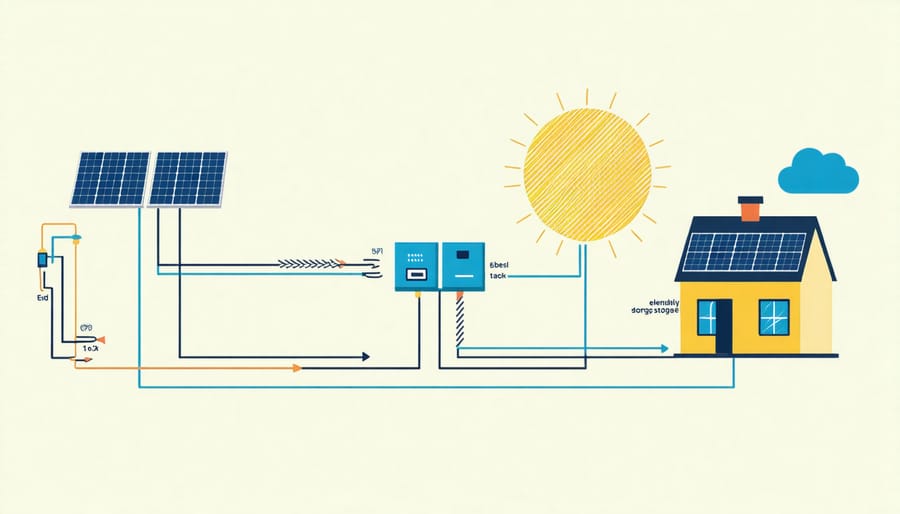
Real Benefits for Your Home
Keeping Your Lights On
One of the most compelling benefits of renewable energy systems with storage solutions is their ability to keep your home powered during grid outages. When properly configured, solar panels paired with battery storage can create a reliable microgrid for your home, ensuring your essential appliances and devices stay running even when your neighbors’ lights go dark.
During extreme weather events or unexpected power failures, this independence from the main grid proves invaluable. Your refrigerator keeps food fresh, medical devices remain operational, and you maintain access to lighting and communication devices. This resilience is particularly important as climate change increases the frequency of severe weather events that can disrupt traditional power supplies.
Modern battery systems automatically detect grid failures and seamlessly switch to backup power mode, often so quickly that you won’t even notice a disruption. Many homeowners find peace of mind knowing they can maintain their normal routines during outages, from working remotely to keeping their security systems active.
The stability benefits extend beyond emergencies. During peak usage times when the grid is strained, your stored energy can help reduce demand on the system while protecting you from potential brown-outs or voltage fluctuations that could damage sensitive electronics. This self-sufficiency not only provides security but also contributes to a more resilient overall energy infrastructure.
Saving Money with Smart Storage
Energy storage systems aren’t just about keeping the lights on – they’re a smart financial investment that can cut your energy bills significantly. By storing excess energy during off-peak hours when rates are lower, you can use this stored power during peak times when electricity costs more. This practice, known as peak shifting, can lead to substantial savings on your monthly utility bills.
Modern storage systems also allow homeowners to maximize their renewable energy investment. Instead of sending excess solar power back to the grid, you can store it for later use, increasing your energy independence and reducing reliance on grid electricity. Many utility companies offer time-of-use rates and special incentives for homes with storage systems, creating additional opportunities for savings.
The financial benefits extend beyond daily usage. During power outages, storage systems prevent food spoilage and eliminate the need for expensive backup generators. Some homeowners even participate in utility demand response programs, earning credits or payments for sharing stored energy during peak demand periods.
While the initial investment in energy storage might seem significant, various federal and state incentives, tax credits, and rebates can substantially reduce your out-of-pocket costs. When combined with the ongoing savings from reduced grid dependency, most homeowners find their storage systems pay for themselves within a few years.
As we’ve explored throughout this article, energy storage solutions play a vital role in addressing grid stability challenges posed by renewable energy integration. For homeowners, the benefits extend far beyond supporting the broader power grid. By investing in energy storage systems like home batteries, you can create a more resilient and sustainable home energy system while potentially reducing your electricity bills.
These storage solutions act as a bridge between intermittent renewable energy generation and consistent power needs, ensuring your lights stay on even when the sun isn’t shining or the wind isn’t blowing. They also provide valuable backup power during grid outages, offering peace of mind and energy independence.
The technology continues to improve while becoming more affordable, making it an increasingly attractive option for environmentally conscious homeowners. By participating in the transition to renewable energy through energy storage adoption, you’re not just securing your own power supply – you’re contributing to a more sustainable and stable energy future for everyone.
As we move toward a greener grid, energy storage will remain a crucial component in maintaining reliability while maximizing the benefits of renewable energy sources. The time to consider these solutions is now, as both the technology and incentives have never been better.

